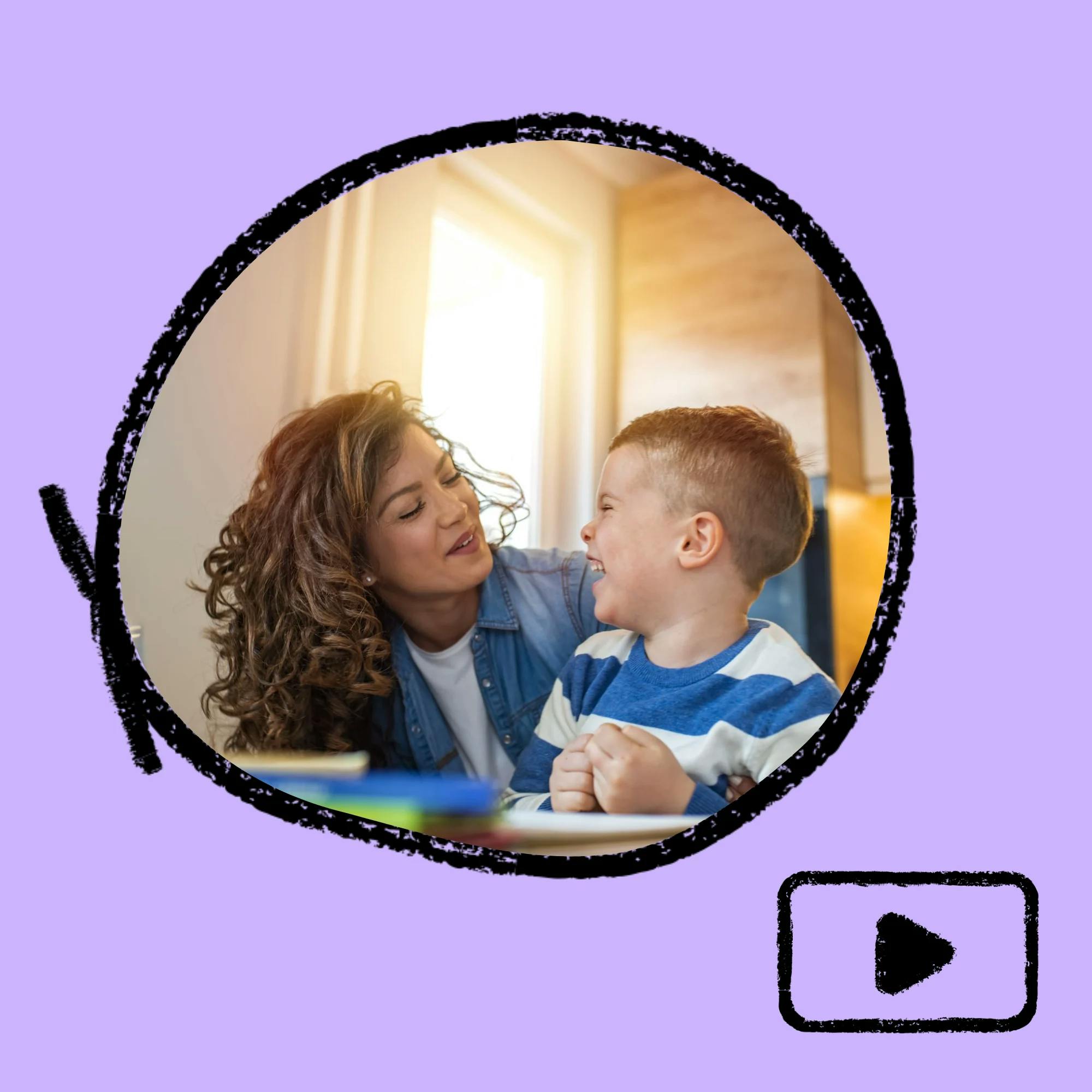Using Play to Encourage Communication From Your Child
Today we’re talking about something called play sabotage! It sounds a little spooky, but it’s a strategy that speech therapists use all the time with families focusing on early communication with their children. Let’s jump in!
Play is the work of kids, and it’s also a fundamental tool in speech therapy for children–especially our youngest clients and earliest communicators. Play mimics communication. From the back and forth of turn-taking, to sustained attention, to cause and effect relationships, there is so much more to play than fun and games. Though fun is definitely key!
We go into more detail on this topic in our video called “Why we use play during speech therapy.” In a nutshell, we use play in therapy because it’s motivating. When your child wants to keep playing, it gives them repeated opportunities to hear new vocabulary and sentence structures. That makes it more likely they’ll learn those new words and maybe even imitate or say them.
But I’ve had my fair share of moments where the kiddo I was working with was pleased as punch to just play and let me do all the talking. That’s where play sabotage comes in. Imagine your child is cruising a train along the track, happy to be pushing it. Maybe you’re modeling some train sounds, “chugga chugga choo choo”--or maybe you’ve tried modeling “Go, train!” but your little one hasn’t made a peep. Go ahead and knock a toy tree onto the tracks–now suddenly there’s a problem to solve!
“Oh no, the tree!” “Stop, train!” “Move, tree!” You can model language that’s just one step above what your child is currently using, whether that’s no verbal words, single words, or two-word phrases. With play sabotage, we want to create a situation that requires communication to solve. So keep the tree there while you model and wait for your child to try chiming in. If they don’t say anything after a model or two, model once more and then move the tree off the tracks. “Phew! Go, train!”
What’s important is that we’re creating a small moment where your little one needs to look up and reach out with some type of communication attempt. But if your child doesn’t respond to your sabotage, you can move on and continue playing. Don’t insist they communicate something–we don’t want them to become frustrated or lose interest. You can always try again later with another situation.
One textbook therapist move is to place toys you know your child will want in a container that you know they can’t open themselves. Boom: we’ve created an opportunity where they need your assistance, and we can model “help,” or maybe “open.” If your little one is ready, you can wait before modeling any words to see if they ask you on their own!
Here are a few more ideas you can try for play sabotage. Take a moment to think of what you might model during each of these situations:
Uh oh, the baby doll has shoes on her hands!
Dad is holding all of the puzzle pieces!
The dog keeps trying to eat the cookies!
There’s a ball stuck in the barn door!
To recap, play sabotage sounds a little harsher than it really is. When you’re playing alongside your child, you can make a sly move once in awhile to disrupt the play scenario and encourage a moment for communication. I think you’ll find that a lot of silly fun can come from play sabotage, and hopefully a lot of new communication from your child, too!






